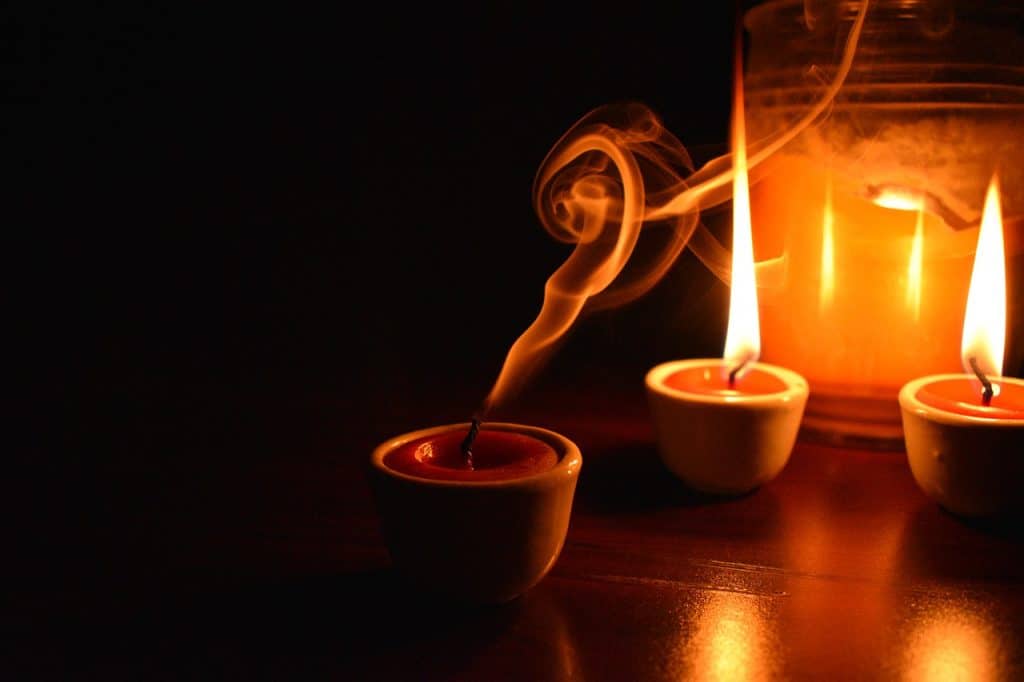There are many objects that can be used to give your homes and living spaces the right kind of fragrance that you need. However, candles hold a special space that is unique to only them. They have been in use for thousands of years, however they their significance has increased spontaneously in recent times.
Never the less, there are still a number of things that most people do not understand about candles, despite how long they have been around (and this is partially due to the decline in candle usage, which took place in the 19th century).

THE HISTORY OF CANDLE MAKING
Candles are cute and have a way of igniting sentimental and nostalgic memories, particularly scented candles. This isn’t too much of a surprise, seeing as our sense of smell is closely tied to our memory (so much so than other senses like touch or taste).
Candle lovers everywhere know that candles are so much more than portable, cute-looking household items. Instead, they are relics of the past, and custodians of a crucial part of our history.
Candles have been around for over 5 000 years (which is a very long time, all things considering). They have seen the rise and falls of great empires like Ancient Greece and Ancient Rome, and much like mankind, they have also embraced the forces of change and evolution.
The history of candles began with the exploration of the Ancient Greeks into the realm of illumination. And the version of the candle that we have today is a testament of all their efforts in that field, including their successes and failures.
From insects wrapped up in papyrus to rush-lights (which are basically torches whose flammable ends have been dipped into rendered animal fat), candles have been through so many changes over the years. Before they went into decline at the end of the 19th century, the latest form to be invented (at the time), was paraffin wax candles.
At the time, paraffin wax was preferred by candle makers because it was very easy to make and its materials were much cheaper, compared to other types of candle wax that were popular during that period (i.e. beeswax and tallow wax). However, the invention of the electric bulb drove people out of the candle markets, and this lead to a downward turn in candle sales.

HOW TO MAINTAIN YOUR CANDLES
The decline of candles was a dark time in the history of candles and there many would have thought that it would never be over. However, staying true to form as objects that are always ready and willing to adapt to change, candles soon became popular again. This time around, it was because they have now become major players in the field of aromatherapy; where pleasant natural scents (obtained from essential oils) are used to treat ailments and conditions that pose risks to human health.
However, the candle making industry is still recovering from the previous, great decline of candles, in the sense that a lot of knowledge related to candle making have been lost over time. Relevant points and tips about how to properly maintain candles have also been lost over time, and this should not be the case.
Here are some of the ways in which candles can be cared for, in order to promote and sustain its lifespan (and also to protect the integrity of properties such as its fragrance):
- Always trim your wicks after purchase
One of the most important practices that help in protecting a candle’s lifespan is trimming of wicks. It is important to trim a candle’s wick after purchase and before use, in order to reduce the flame. Longer wicks usually mean that a bigger flame would be produced when the candle is lit therefore; shorter wicks are more preferable (as they help the candle to burn more slowly).
There is an ideal length which candle wicks are supposed to be trimmed down to, before they should be lit. But this is a fact that a lot of people have forgotten about.
Candles should always be trimmed down to a quarter of an inch (1/4 inch), so as to protect the candle optimally. Wick trimming also helps in preventing tunneling, and it can be done subsequently – as the candle continues to be used over time – in order to maintain it properly.
- Ensure that the candle burns evenly
Another important practice that many people do not know is the fact that candles should be allowed to burn evenly, when they are lit for the first time (actually, it is very important for a candle to burn evenly at all times. However, the first time is particularly important as it sets the tone for the entire – over all – candle burning experience). This is because experts – and enthusiastic candle lovers – will tell you that a candle always keeps score of previous damage. And so, if a candle is not allowed to burn evenly, the first time it is lit, this problem may continue to persist throughout the candle’s life span.
- Add fragrance in by weight and not by volume
Another thing that many people do not know about candles – especially beginners who are just learning how to make candles – is that the ingredients for making candles should be added in by weight and not by volume. This simple fact helps in preventing a lot of mistakes and errors that are usually encountered in candle making.
- Keep your candles away from strong wind
Another thing people should know is that it is very important to keep them away from strong winds, as this could also result in tunneling. However, places where candles are burned should have adequate ventilation, in order to ensure the health of the people that are burning it.
WHAT CAUSES SPECKS OF COLOR AT THE BOTTOM OF MY CANDLES?
Another thing most people do not know about candles is the answer to the question, “What causes specks of color at the bottom of my candles?”
However, the answer is simple. Specks occur at the bottom of your candles when candle dye does not dissolve completely in hot wax. These clumps of color in the hot wax end up turning into specks at the bottom of the candles (sometimes, they are even found on other parts of the candle, such as its sides).




